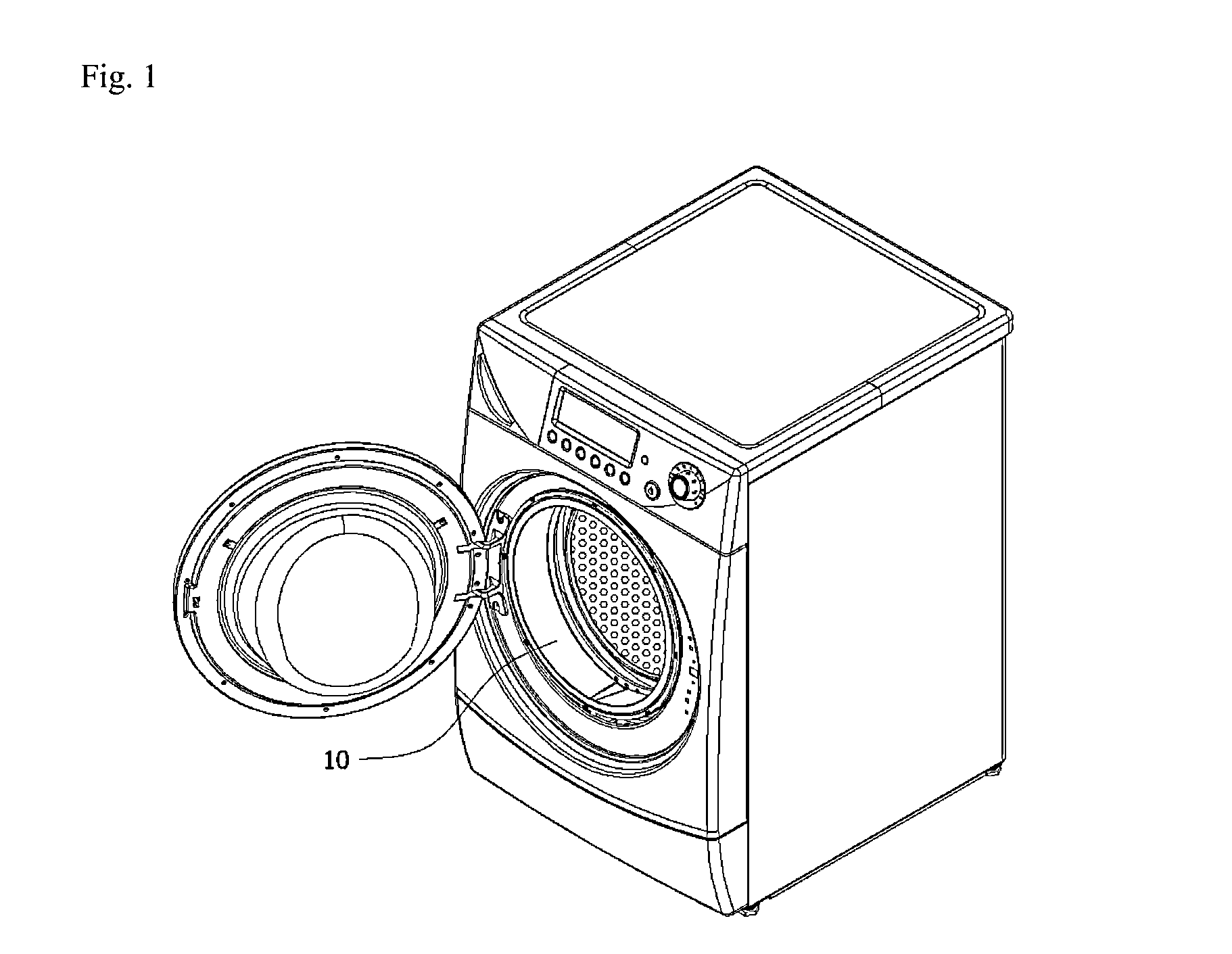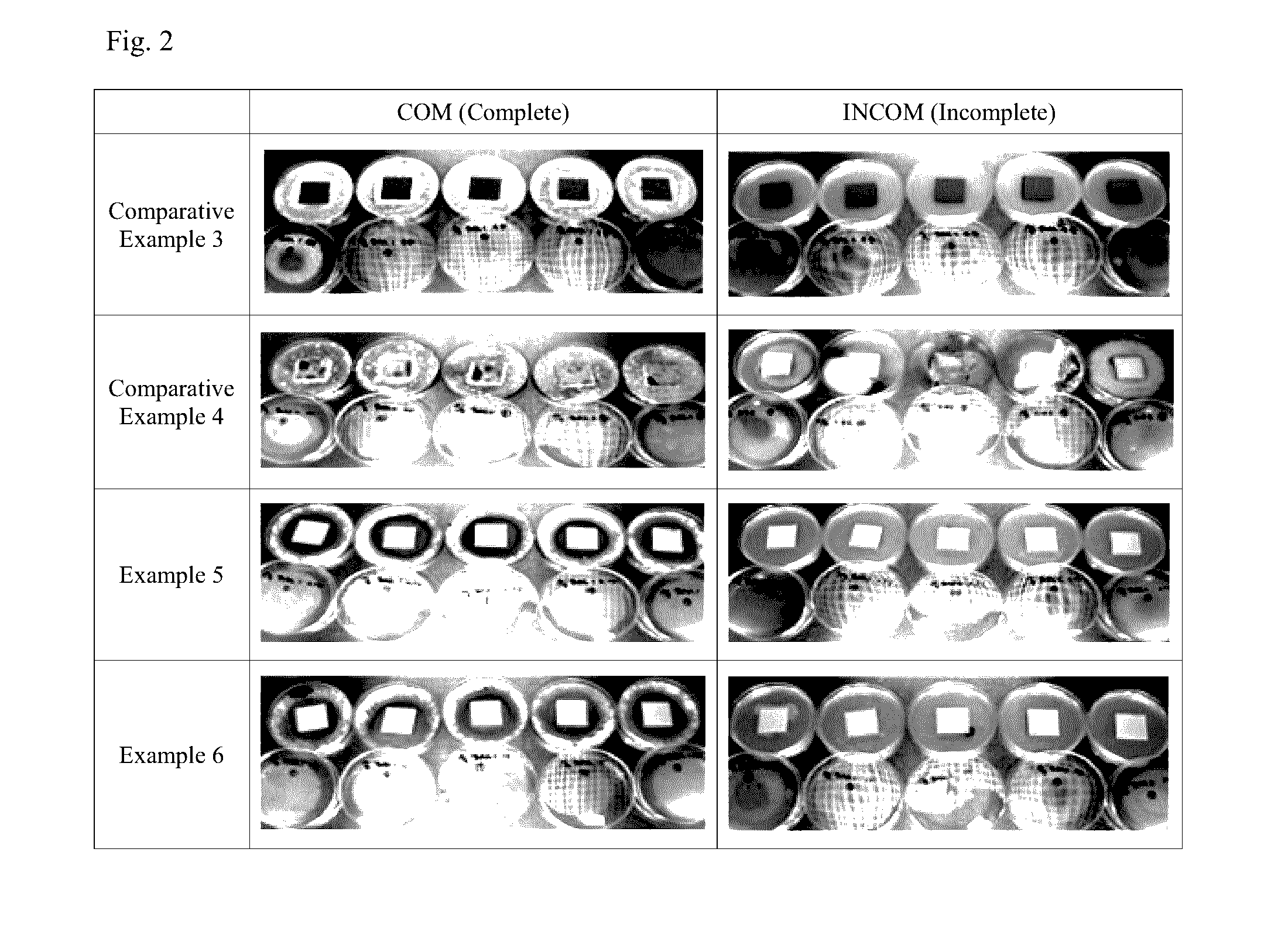Low-hardness, high-strength thermoplastic elastomer with good abrasion resistance and diaphragm including the same
a thermoplastic elastomer, high-strength technology, applied in the direction of film/foil adhesives, biocides, conductors, etc., can solve the problems of limiting the application range of thermoplastic elastomers, material abrasion resistance, and inability to produce vulcanized rubber, etc., to achieve good abrasion resistance, low hardness, and high strength
- Summary
- Abstract
- Description
- Claims
- Application Information
AI Technical Summary
Benefits of technology
Problems solved by technology
Method used
Image
Examples
examples
[0117]Detailed specifications of components used in Examples 1-7 and Comparative Examples 1-5 are as follows:
[0118](A) Hydrogenated Triblock Copolymer
[0119]A styrene-ethylene-butylene-styrene (SEBS) block copolymer (G1651, KRATON) is used. The block copolymer includes 33 wt % of styrene corresponding to a hard segment, and 67 wt % of ethylene-butylene corresponding to a soft segment. The block copolymer has a weight average molecular weight of 270,000 g / mol.
[0120](A′) An ethylene-propylene-diene rubber (EPDM) (DONG-A HWA SUNG Co., Ltd.) is used.
[0121](B) Non-aromatic Oil
[0122]A paraffin oil (KL-900, SEOJIN CHEMICAL Co., Ltd.) is used. The paraffin oil has a weight average molecular weight of 740 g / mol, a specific gravity (15 / 4° C.) of 0.88, a flash point of 290° C. or more, and a kinematic viscosity of 171 cSt at 40° C.
[0123](C) Polyolefin Resin
[0124]A homopolypropylene resin (HJ-700, SAMSUNG TOTAL) is used. The homopolypropylene resin has a melt index (230° C., 2.16 kg) of 22 g / 10 ...
examples 1-2
[0135]The components are mixed in the amounts shown in Table 1. Each of the mixtures is extruded using a twin-screw extruder (L / D=20-60, Φ=32 mm, 70 mm) at a fixed temperature of 240° C., a screw rotation speed of 300-600 rpm and a self-supply speed of 60-600 kg / hr to produce pellets. The pellets are dried at 80° C. for 4 hr and molded into specimens using a 10 oz injection molding machine at 240° C. The physical properties of the specimens are measured by the following methods. The results are shown in Table 1.
examples 3-7
[0140]The components are mixed in the amounts as shown in Table 2. Each of the mixtures is kneaded using a Banbury mixer at a fixed temperature of 240° C. and 40 rpm for 25 min, and extruded using a twin-screw extruder (L / D=48, Φ=75 mm) at a temperature of 240-270° C., a screw rotation speed of 450 rpm and a self-supply speed of 500 kg / hr to produce pellets. The pellets are dried at 80° C. for 4 hr and molded into specimens using a 10 oz injection molding machine at 240° C. The physical properties of the specimens are measured by the following methods. The results are shown in Table 2.
PUM
| Property | Measurement | Unit |
|---|---|---|
| tensile strength | aaaaa | aaaaa |
| melt index | aaaaa | aaaaa |
| particle diameter | aaaaa | aaaaa |
Abstract
Description
Claims
Application Information
 Login to View More
Login to View More - R&D
- Intellectual Property
- Life Sciences
- Materials
- Tech Scout
- Unparalleled Data Quality
- Higher Quality Content
- 60% Fewer Hallucinations
Browse by: Latest US Patents, China's latest patents, Technical Efficacy Thesaurus, Application Domain, Technology Topic, Popular Technical Reports.
© 2025 PatSnap. All rights reserved.Legal|Privacy policy|Modern Slavery Act Transparency Statement|Sitemap|About US| Contact US: help@patsnap.com


